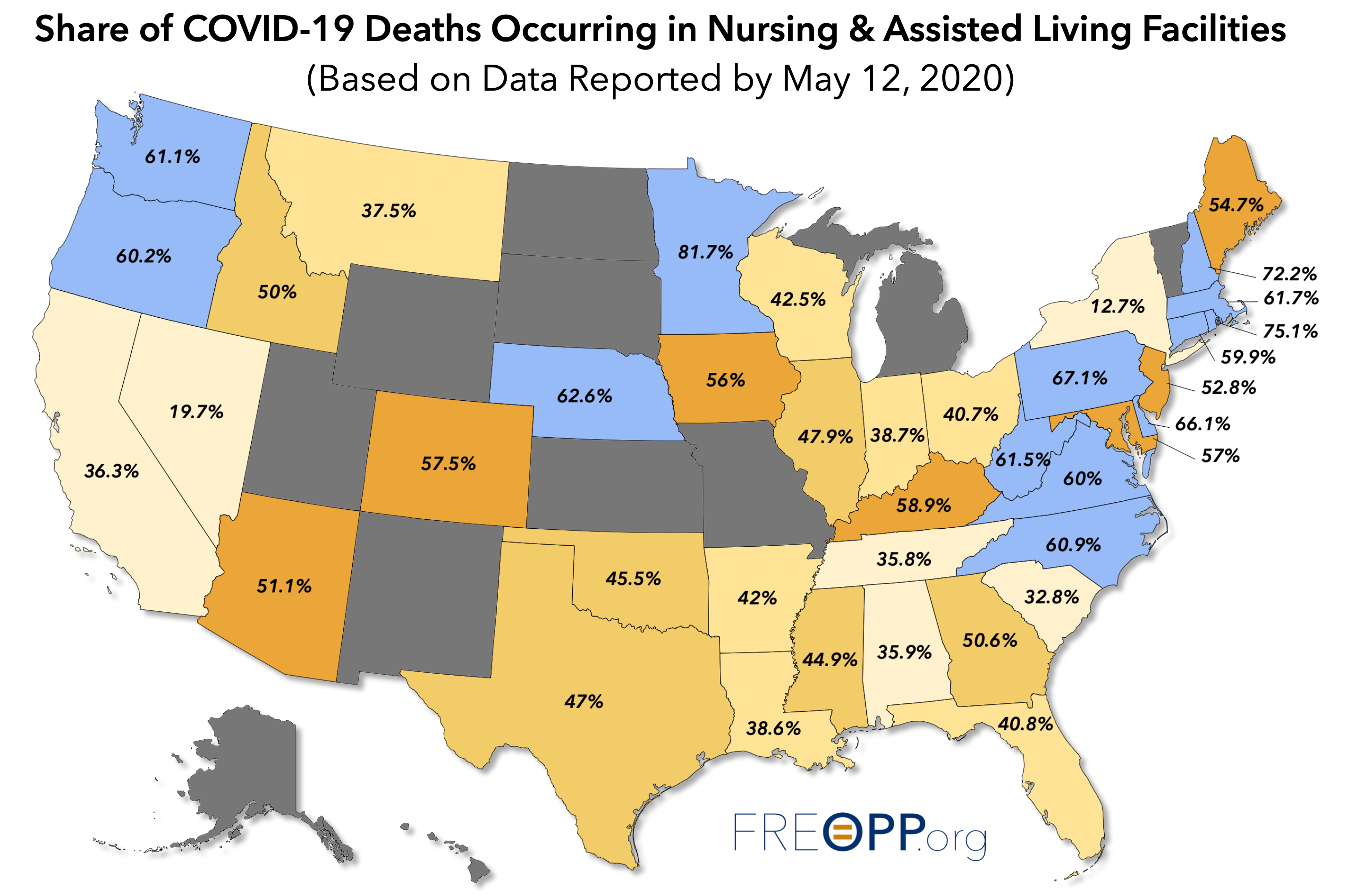Inside our care homes, Minnesota is more dangerous than average. Outside, it is safer
Yesterday, Minnesota Department of Health announced that 17 more people had died of Covid-19. Once again, a high proportion, 13 of them, had died in long-term care or assisted living facilities. Of Minnesota’s 748 Covid-19 deaths so far, 608 – 81% – have occurred in long-term care or assisted living facilities.
This is the highest percentage in the country, as Figure 1 shows. These are contentious numbers. There is no uniform definition of a Covid-19 death nor of when a death does or doesn’t count as occurring in a nursing and assisted living facility. New York’s numbers especially have attracted skepticism. Nevertheless, Minnesota is at least one of the worst performers on this score.
Figure 1

Source: The Foundation for Research on Equal Opportunity
Why is this?
Minnesota has a smaller that average share of nursing and assisted living facility residents
People in nursing and assisted living facilities are especially vulnerable to Covid-19. If the share of Minnesotans living in such facilities is higher than in other states, we might expect to see a higher share of fatalities there.
Once again, the data to test this hypothesis is difficult to come by. The best source is the Committee To Unleash Prosperity’s Nursing Home COVID Deaths tracker. Even so, some states are not reporting, some have bad data, and for some the media is the only source.
With these qualifications in mind, we can see that the share of Minnesotans living in nursing and assisted living facilities is not especially large, as Figure 2 shows. Indeed, at 4,389 per million Minnesota residents, it is slightly below the median figure of 4,640 residents per million for the 46 states and District of Columbia for which we can calculate this number.
Figure 2: Nursing and assisted living facility residents per million

Source: Center of the American Experiment
Minnesota’s nursing and assisted living facilities are more dangerous than the average
If Minnesota’s population in nursing and assisted living facilities is not especially large, is the large share of our state’s fatalities which they account for because they are more dangerous? The numbers suggest there is something to this.
Figure 3 shows the number of Covid-19 deaths in nursing and assisted living facilities for every thousand residents of those facilities. It shows that the median number of such deaths is 12. Minnesota’s number, 25, is somewhat above this, ranking our state 16th overall. Indeed, if our rate matched the median, the total number of Covid-19 deaths in Minnesota would fall by 331 to 447.
Figure 3: Nursing and assisted living facility deaths for every thousand residents of those facilities

Source: Center of the American Experiment
So yes, our nursing and assisted living facilities are more dangerous than the average. Even so, this doesn’t seem enough to push us up to top of the league for the share of death in nursing and assisted living facilities.
Outside of nursing and assisted living facilities, Minnesota is one of the safest states in America
This brings us to the other side of the equation. The percentage of deaths in nursing and assisted living facilities is simply the result of
deaths in nursing and assisted living facilities / all deaths
The ratio might also be high if deaths outside nursing and assisted living facilities is especially low. The numbers suggest that that is the case for Minnesota.
Figure 4 shows the number of Covid-19 deaths per million of the population with deaths in nursing and assisted living facilities removed. The median number here is 47 and with a figure of 25, Minnesota is well below that.
Figure 4: Covid-19 deaths per million of the population with deaths in nursing and assisted living facilities removed

Source: Center of the American Experiment
Inside our care homes, Minnesota is more dangerous than average. Outside, it is safer
Our comparatively poor record on Covid-19 fatalities in nursing and assisted living facilities shows that our state government has failed to protect those most at risk.
John Phelan is an economist at the Center of the American Experiment.